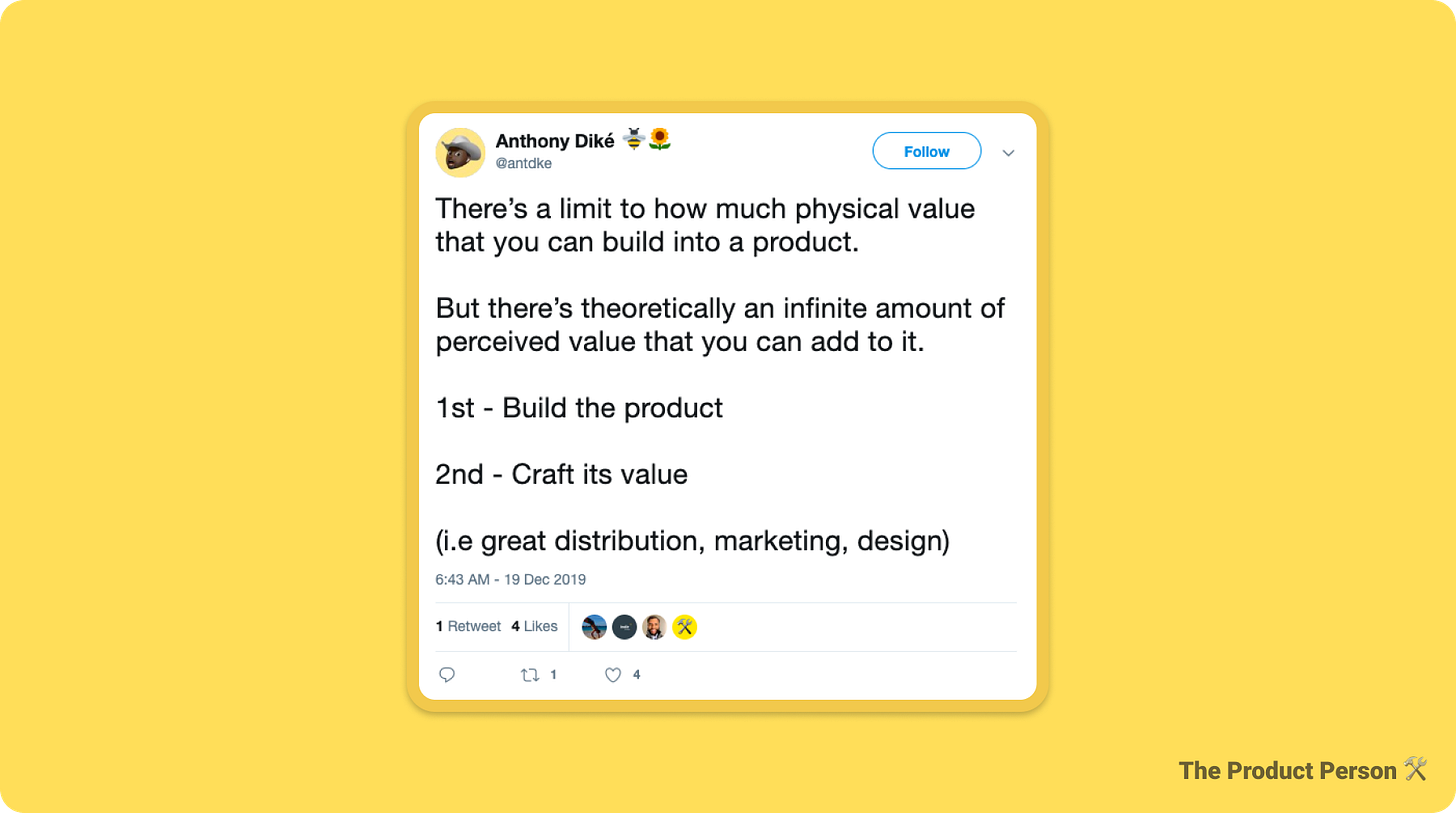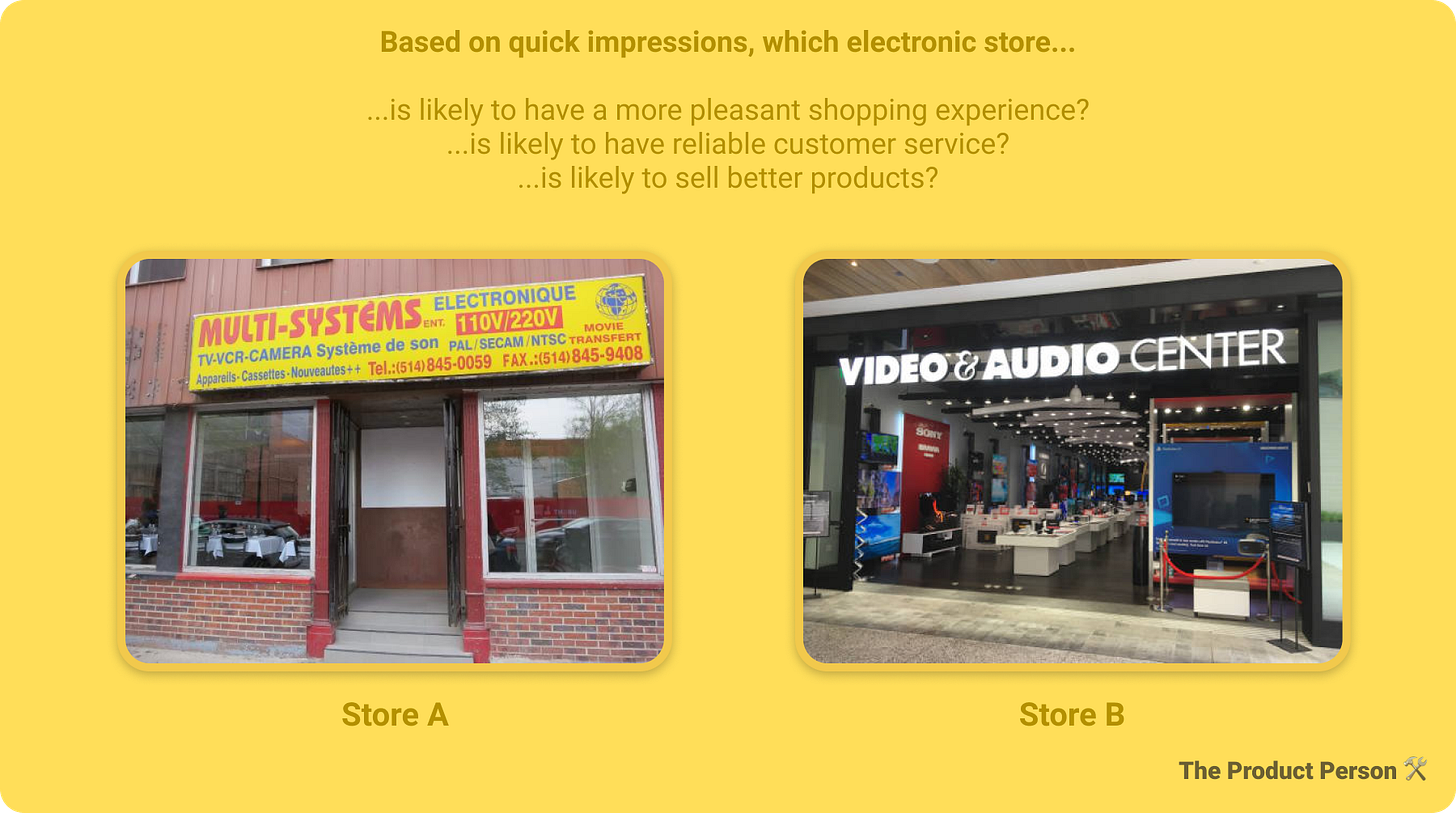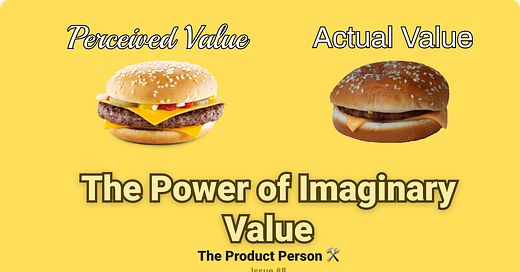🛠️ #8: The Power of Imaginary Value
Here are 6 ways to improve your product without changing your product.
Hey Product People 🛠️
It's a New Year! Hope your 2020 is off to a great start. Today, I’m sharing my findings from a podcast episode by Farnam Street. It’s with Rory Sutherland (@rorysutherland), the Vice Chairman of Ogilvy & Mather. I found his thoughts on using intangible value to improve products fascinating. And now I’ll expand on his thoughts plus I have a link to that podcast episode at the end.

🍎 Steve Jobs
Steve Jobs was a con man. A modern day snake-oil salesman. He created value out of thin air and sold that imaginary value to us, the consumers. And we bought it.
Now, I don’t actually believe that Steve was a con man (I’m typing this on a MacBook Air). Steve did, however, sell us imagination.
Tech purists disliked him because Apple created products that weren’t any more powerful than their competition. So the purists believed that Apple’s infamous high prices weren’t at all justified.
Steve thought different. Steve believed that after a certain point, few consumers actually cared about the objective computational power of a piece of tech.
He proposed that we focus more on the loveliness of the interface or the joy people get from using a device; Creating psychological value as opposed to objective value.

✨ The Power of Imaginary Value
The chef and the toilet scrubber analogy
In a restaurant, there’s no real difference between the value created by the people cooking the food and the people scrubbing the toilets and sweeping the floor.
In the context of a business, the chefs are the engineers and the product managers. And the people cleaning the restaurant are the marketers and the PR people.

Michelin-star gourmet meals served in an establishment that reeks of sewage just won’t taste good.
Conversely, average tasting food served in a restaurant with timely and kind waiters, elegant decor, and violin in the background will taste better than they actually are.
The restaurant is a combination of the quality of the food and the context in which it’s consumed.
Similarly, selling a product is a combination of how well it solves a problem and how it presents itself in a certain medium (ie. storytelling, design, etc).
Great product + terrible delivery is the same as eating michelin-star food in a restaurant with backed up sewage pipes. The product could be objectively phenomenal, but the pervading smell of fecal matter kind of ruins any possibility of seeing its value.
The psychology
Humans haven’t evolved to deal with perfect information. We perceive the world in a way that aggregates a lot of information to create a watered-down impression on things.

In his seminal book on consumer psychology, Influence, Robert Cialdini talks about how humans use mental shortcuts, or stereotypes, to operate in the world today.
We don’t have the mental capacity or the willingness to think about every microprocessor, piece of code, or raw material that goes into making a product.
Instead, we often use shortcuts to classify things according to a few key triggers that we repeatedly come across and then respond without thinking when one or another of these triggers are present.
A good example for this is a product like wine.

If you give someone a glass of wine, it will tend to taste better when:
You pour it from a heavier bottle.
You tell them that it’s expensive.
You tell them that there’s a history to it.
Conversely, (this may be a silly example but) that same glass of wine will be perceived to taste bad when you tell that person that you spit in it.
Reality hasn’t changed. It’s the same, unaltered glass of wine. But the perception of the wine has changed due to the story being told.
We use our mental shortcuts to assess situations:
Heavier bottle = good
Expensive = good
History = good
Spit in drink = bad
Similarly, we as consumers use these mental shortcuts to assess products. If we’re shown a product that has a landing page with poorly matched colors, poor quality images, and unclear copywriting, it doesn’t matter if that product will grant us eternal youth, we’ll perceive it to be a bad product.
To continue the restaurant analogy, the floors haven’t been swept, and the toilets are backed-up and emitting a foul odor.
🚽 Clean Your Toilets
Here are 6 tactical ways you can add intangible value to your product to help your customers see it in a more favorable light. I recommend using many of these tactics at the same time:
Have a prominent, unified design
Products with great design are perceived more positively and are more recognizable. When your design is well done and pleasing to the eye, you can use it as a marketing channel to signal the value of your product.
Use the contrast principle
Before showing your own product to the consumer, show off a worse product or the product of your competitor. Highlight features in that product that aren’t as good as yours. When you do this beforehand, your product will look much better than had you shown it first.
Limit the supply of or access to your product
When you keep the supply of your product lower than the amount of people that want it, your product is perceived as more valuable. Simple supply and demand. Kanye West does this with his sneaker releases and Superhuman does this with their email software.
Show that there are already people that like your product
Your product will seem more desirable to consumers if you can show that many others are using your products. Customers will be more likely to buy when shown evidence that others are buying too.
Increase your prices
Back to the mental shortcuts: Expensive = good. This mental shortcut works for us most of the time. The more expensive coat lasts longer and the more expensive food tastes better and is more nutritious. So why shouldn’t that apply to products?
Have a compelling backstory
Which dining room table sounds more valuable? The one made from the wood in the forest nearby or the one made from the trees imported from Japan and craved using a traditional Japanese woodcutting techniques?
📝 What I wrote about today can be found in the first 15 minutes of the podcast episode. The rest of the episode explores concept of behavior psychology and why consumers purchase things the way they do. I recommend listening to the whole thing. It’s brilliant. Listen to it here.
❤️ Thanks for reading Issue #8. Please click the heart button & share this with someone you know that’ll enjoy it.
🐦 There’s a twitter! Follow for semi-daily tips (@ProductPersonHQ)
By the way, did I miss anything? Reply to this email and let me know.
—
Enjoy the rest of your week :)




Two guys on beach were thirsty, one asks the other if he has change to get a drink. He give him 5 dollars first. But the only place around to buy something is a luxury hotel. So he add 15 dollars more. Value depends also on the context. Someone said Value is what you get.